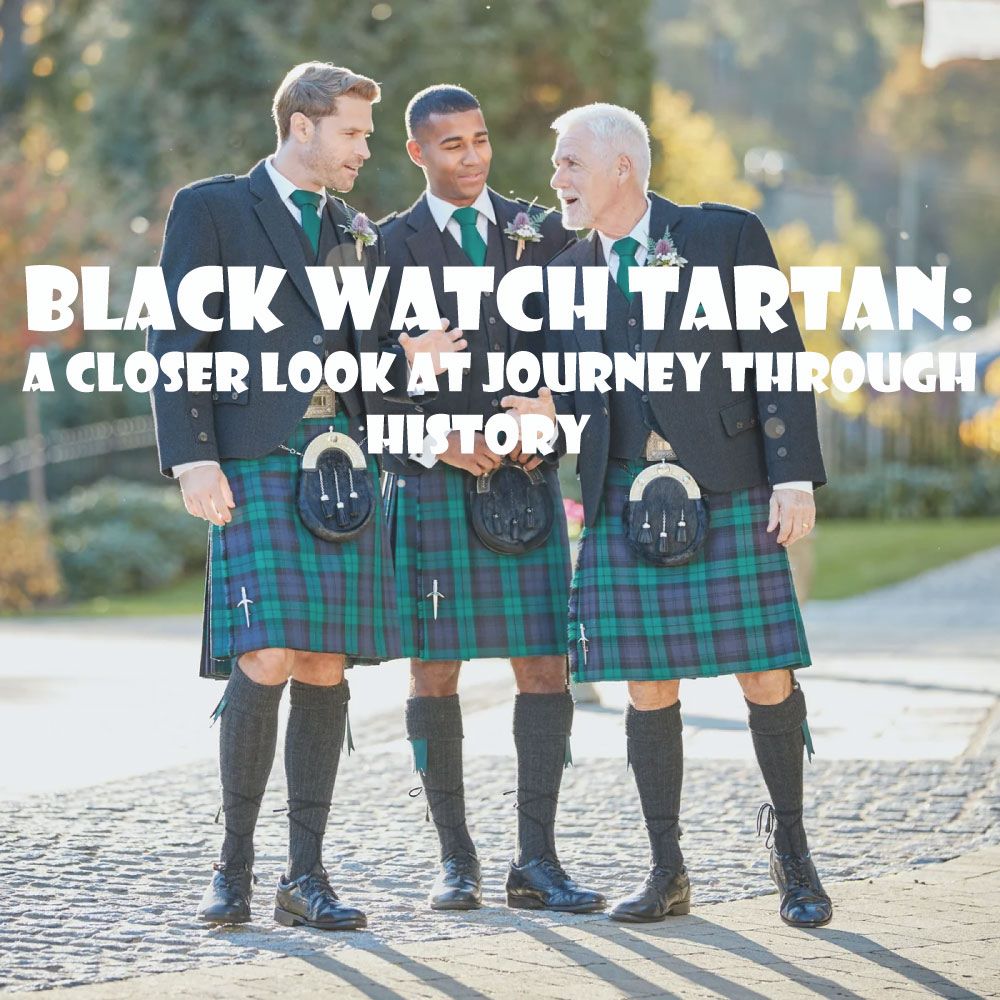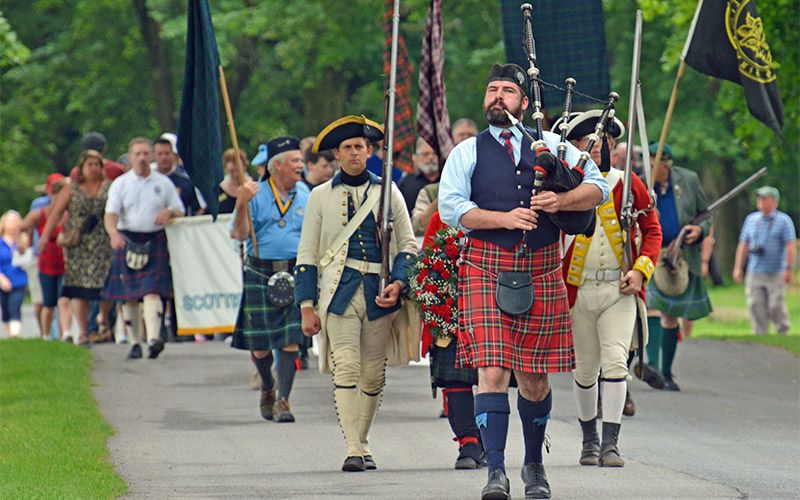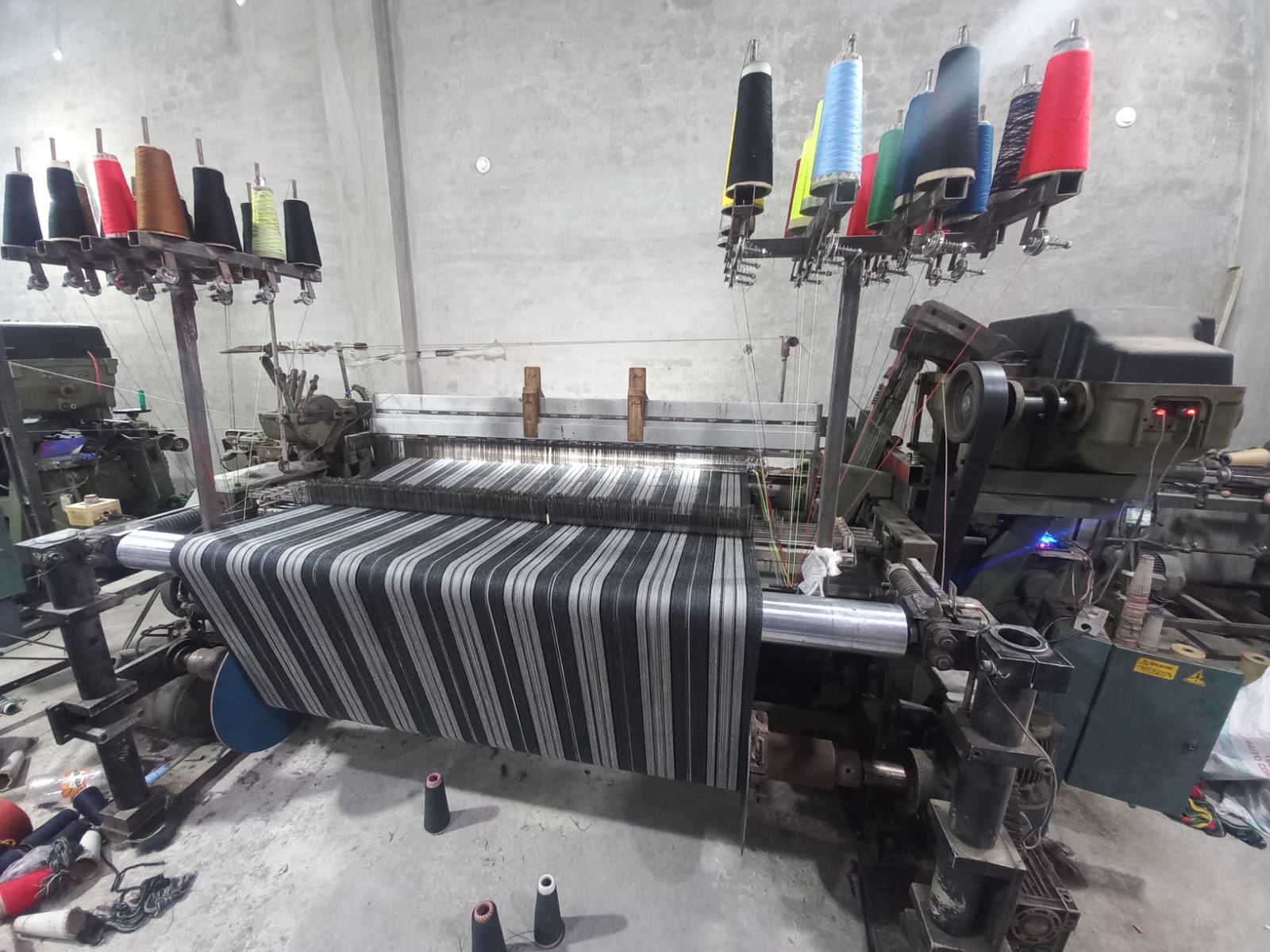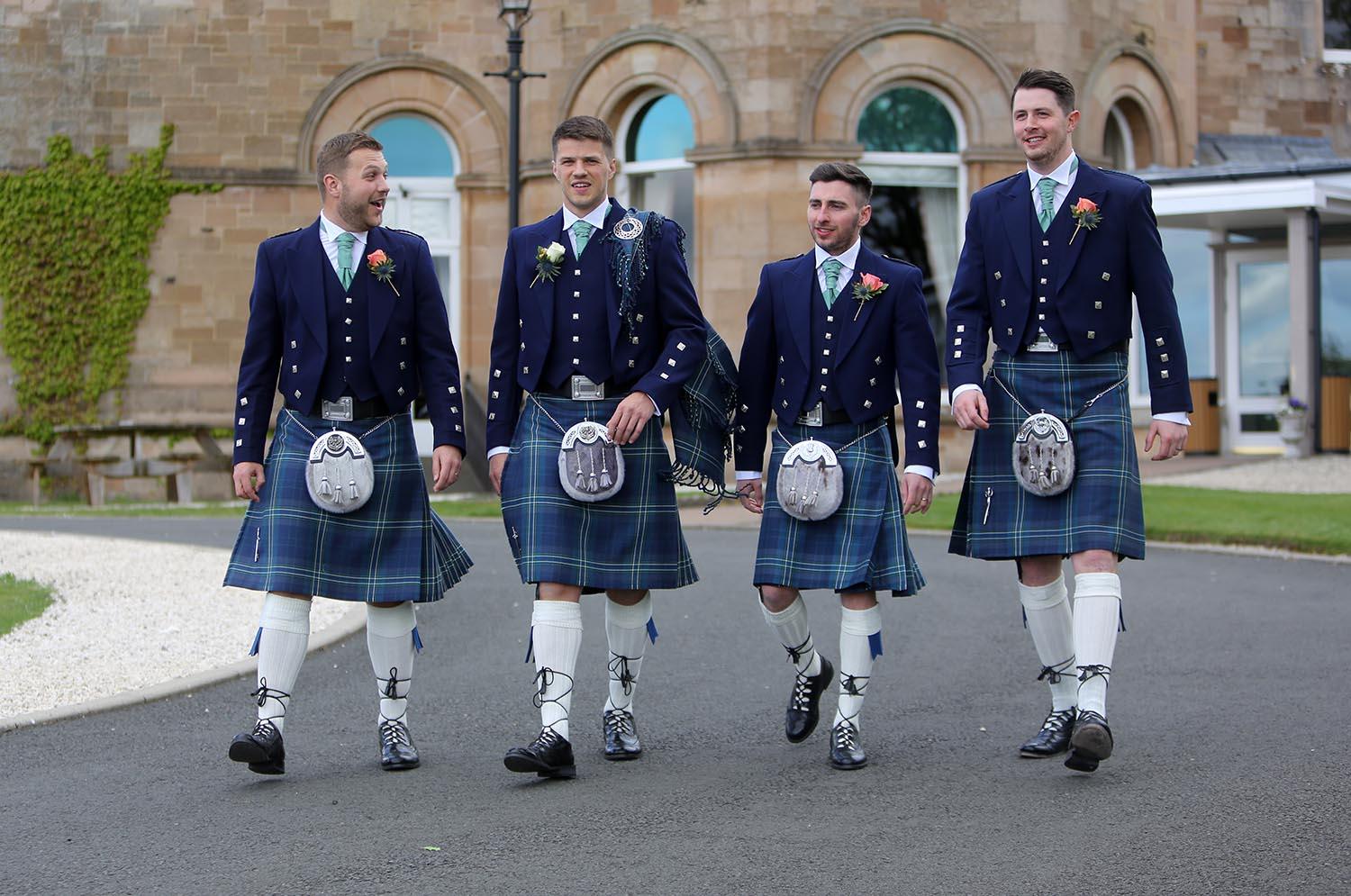Black Watch Tartan: A Closer Look at Journey Through History

Following the Jacobite rebellion in 1715, the British Army's Black Watch Regiment was established for the first time in 1725. The Black Watch, 3rd Battalion, Royal Regiment of Scotland (3 SCOTS), and an infantry battalion of the Royal Regiment of Scotland are today's names for the Black Watch.
Three Companies by Clan Campbell (1725)
Members of Clan Campbell made three companies to design the watch. Clan Campbell (headed by Campbell of Lochnell, Campbell of Carrick, and Campbell of Skipness), Clan Fraser of Lovat (headed by Lord Lovat), Clan Grant (headed by Col. William Grant of Ballindalloch), and Clan Munro (headed by Munro of Culcairn).
King George II Authorized Four Companies (1739)
King George II ordered the establishment of four further companies in 1739 into a regular army Regiment of the Line, headed by the Earl of Crawford. All men were to be "natives of that country and none else." The new Regiment's first muster took place near Aberfeldy the next year, and it is honored with a monument in the form of a soldier uniform of the time.
Tartans kilts have been an integral part of official costumes for some of the most famous regiments in the world for over 300 years! Their regimental tartans became inextricably linked to the very core identity of the soldiers who wore them.
Battle of Culloden (1746)
In 1746, following the war of Culloden, the authorities in London tried to cleanse the Highlands of illegitimate elements through crushing the uncontrollable clan system. The carrying of weapons and the wearing of tartan were made illegal by an Act of Parliament. This Act was strictly imposed. It seems that Highlanders lost all enthusiasm for their tartan attire by the time the Act was repealed in 1785 and were happy to dress in the same manner as other Scots.
Tartan was extinct in 1785; many of the tailors had died, with them. Therefore, the subtleties of the traditional designs were gone when their wooden styled sticks got rotted. Old tartan element have likewise vanished, leaving a hint for upcoming generations.
For Whom the Black Watch Tartan?
As an 'open tartan,' A Black Watch tartan kilt is completely suitable for everyone to wear during Highland Clan events, regardless of Clan affiliation. Those who do not have their tartan may wear the Black Watch Tartan, often known as the Universal or Government Tartan.
Why is it named “The Black Watch”?
The name "The Black Watch" was taken from the dark color of the tartan and the original purpose of the Regiment, which was to "watch" the Highlands. The title has survived and is now integrated into the Regiment's official name.
How did Black Watch Tartan Kilt Made?
Early tartans had simple checks with a couple of colors. The colors were primarily taken from dye-producing roots, plants trees and berries native to a given geographical area. Perhaps, these basic checks or tartans usually wore by the individuals of the area where they got created and also became the clan tartan.
It is said that the designers went to considerable lengths to provide precise tartan patterns by defining each shade of each and every thread on a chunk of wood called a maide dalbh, as well as pattern stick. Secondly, A report in 1572 describes how a woman gave dyed wool to a designer to convert into cloth.
Tailors were able to incorporate more complicated designs with more vibrant and unique colors as chemical dies evolved. The newer clans formed their tartans by adding an over stripe to the parent clan's primary design as clans extend and divided due to birth, death, or marriage.
One of the earliest references to tartan usage by royals was made by King James III's treasurer in 1471 when he bought a piece of cloth for the king and queen. King Charles II wore a tartan ribbon on his coat for his marriage in 1662, while King James V dressed a men's kilt when hunting in the Highlands in 1538.
Tartan was shipped from the Highlands towards South at fixed prices to prevent overcharging throughout the 16th and 17th centuries, with the pricing established by the quantity and shades of color in the cloth.
Is The Black Watch Still Used Today?
The Royal Scots & King's Own Scottish Borderers, Royal Highland Fusiliers, Black Watch, Highlanders, Argyll & Sutherland Highlanders, and Territorial Army (Scotland) became the Royal Regiment of Scotland in 2006. For the new regiment, the Black Watch tartan (with somewhat lighter colors) was chosen, and it is still used today.
About 12-yard kilts for men were worn by Black Watch soldiers, paired with red jackets, red waistcoats, and bluebonnets. A gun, bayonet, broadsword, pistol, and dirk would have been among their uniformed weapons. The unit wore the Black Watch tartan from its inception until 1940.







